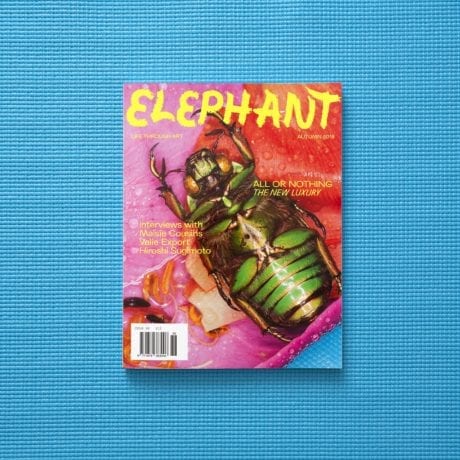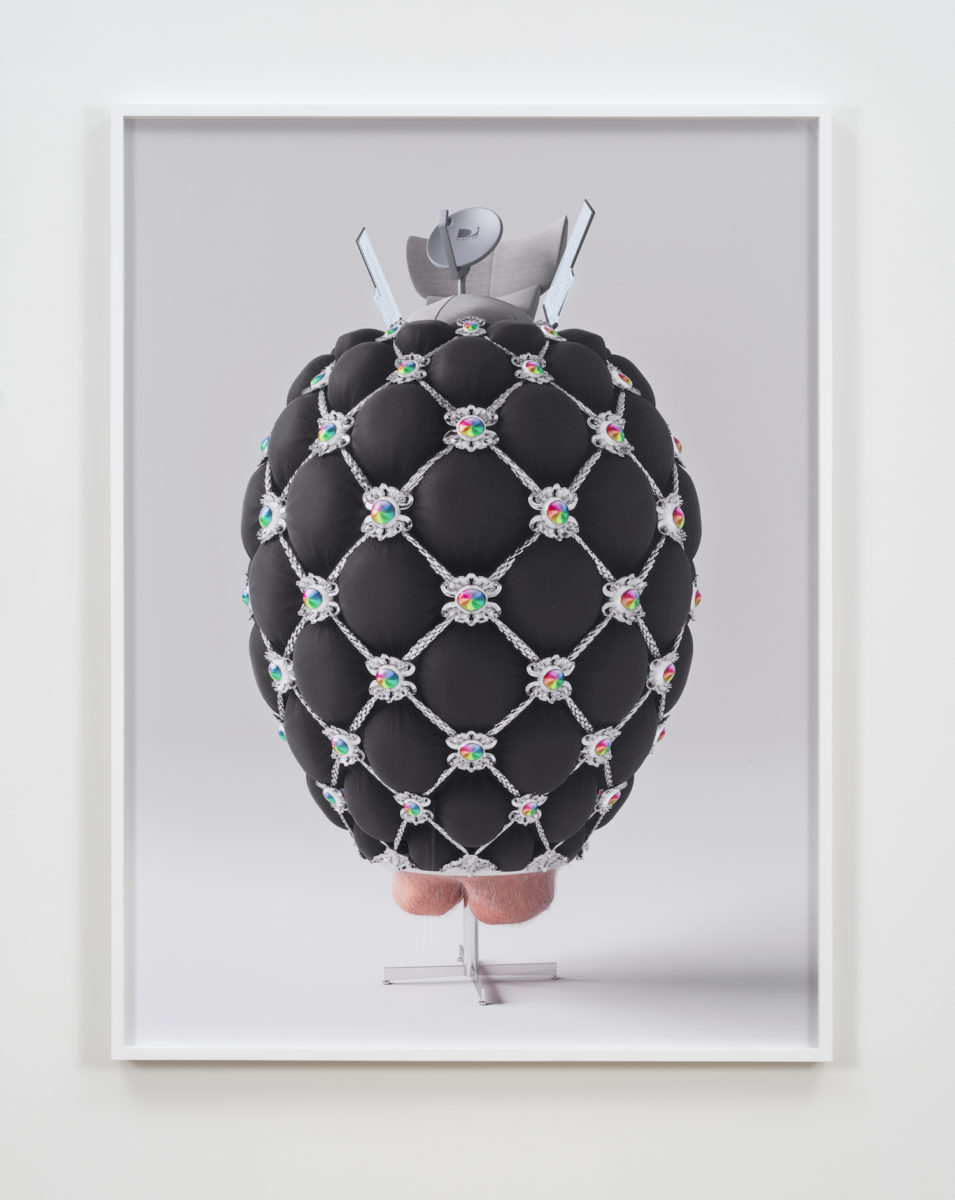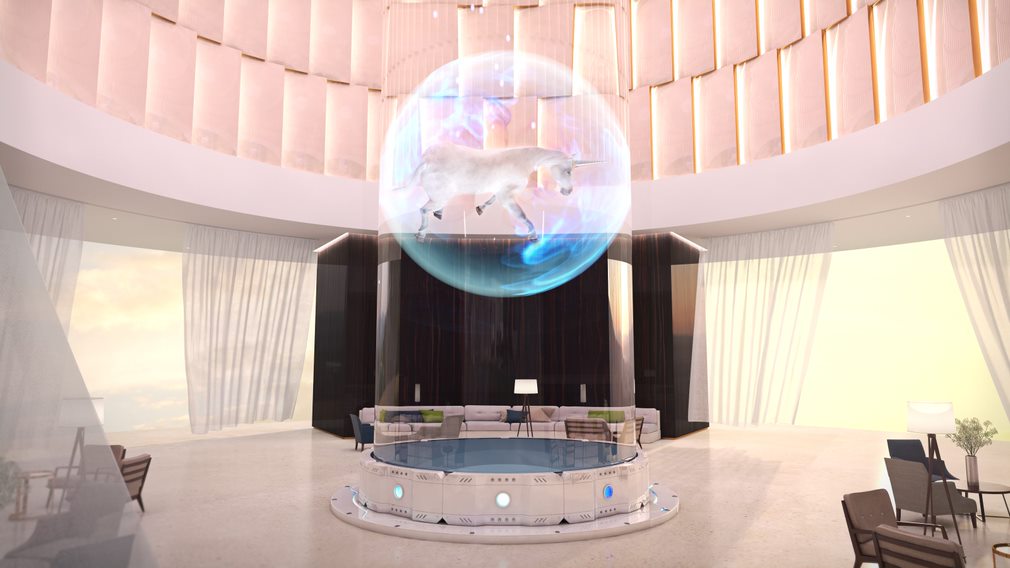
You have worked consistently with CGI to create the detailed worlds of your films and still images. What appeals to you about building in the digital world, and where did your interest in these tools develop?
My interest with these tools developed when I was a teenager. I would design environments for video games and share them online in so-called “modding” communities. This led to more advanced 3D modelling and animation software, and I become really enthralled by the possibility of limitless image creation that it offered.
The worlds that you create are remarkably detailed, full of absurdist and surreal combinations of bodies, buildings and objects. They are at once familiar and yet alien; what are your intentions in creating this distancing effect on reality as we know it?
The works create something photorealistic, but then have these surreal and unexpected moments. It’s an arresting dissonance, one that I think can help raise some critical awareness about our increasing inability to distinguish reality from fiction. It’s like a dream, where things we recognise and know become conflated and meanings are interchangeable.
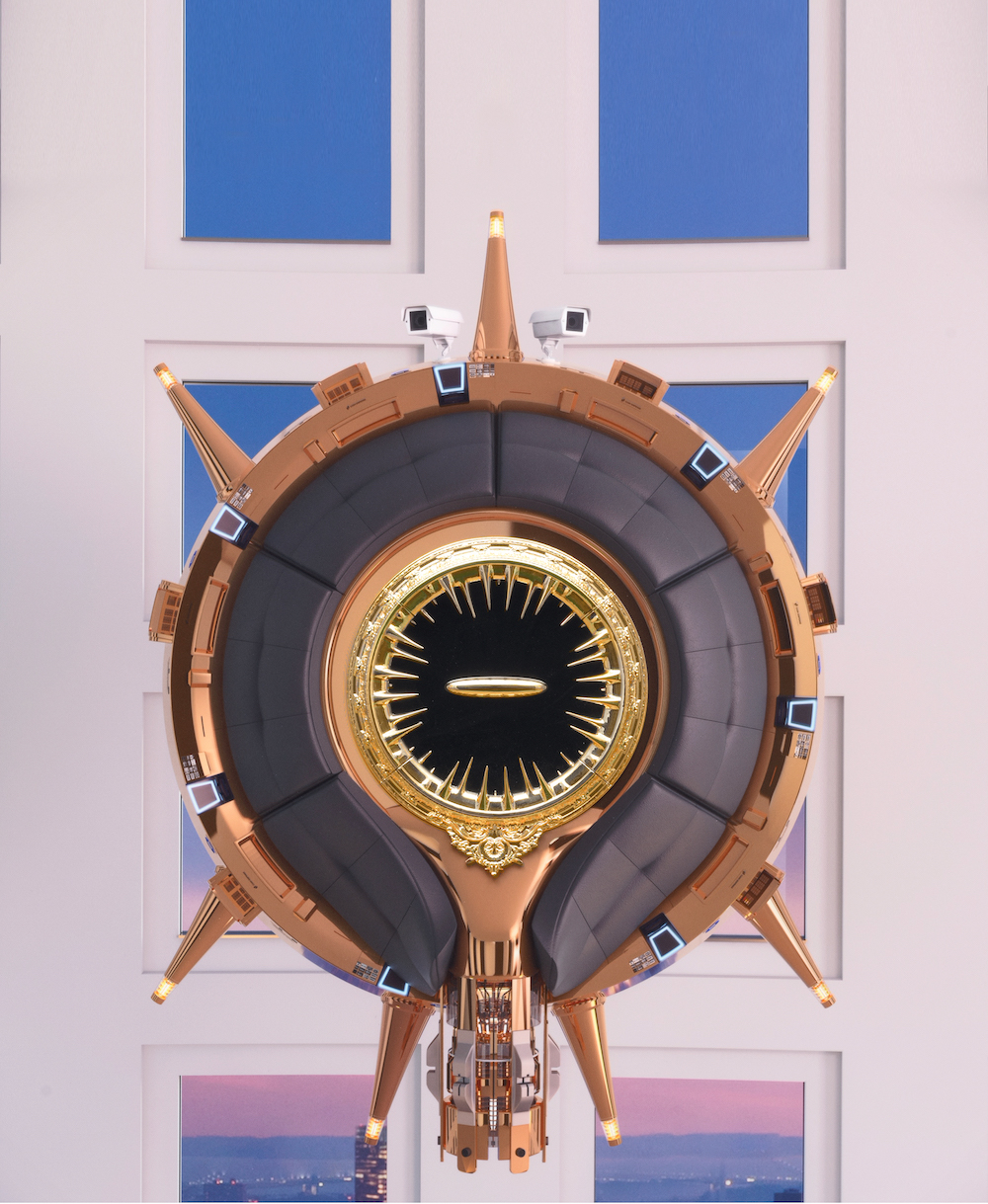
In particular, the buildings and architecture are meticulously constructed in CGI, drawing upon everything from frothy baroque to vernacular shopping malls. Do you have a particular interest in architecture, and why?
I grew up in a housing project in Rockaway Beach, Queens, and the entire skyline of Manhattan always loomed in the distance; it means that architecture has always infected my dreams. I think architecture historically has always tried to embody the often ill-conceived notions of utopia within its own era. Baroque or rococo, with their ostentatious decadence, reflect imperialistic tendencies and extreme wealth disparity. Today, in the digital age, you have clinical glass condos that are totally dehumanized and cold. As Italo Calvino writes in Invisible Cities (1972): “Cities, like dreams, are made of desires and fears… their rules are absurd, their perspectives deceitful, and everything conceals something else.”
Luxury items are a recurring motif in your work, placed in a dystopian environment where they take on a darker tone. Do you find humour in this alternative take on luxury, or is there something more sinister at play?
Growing up in New York I witnessed much of the city turn into a fortress for the rich. I also began making art right around the 2007–8 financial crisis, and dread about wealth disparity, as well as a critical anxiety about the shaky foundations of a materialistic and capitalistic society, permeates my work. It is a very millennial worldview!
“The works create something photorealistic, but then have these surreal and unexpected moments”
The slick, clean visual style of your films speaks to the way in which luxury products are promoted and sold, whether in the promotion of real estate or the marketing of a super-yacht. Where do you find inspiration for this, and what are the challenges of producing work of this level?
I do find inspiration oddly enough in advertisements in luxury lifestyle magazines, and much of my work directly references their cold and glossy yet strangely seductive aesthetics. In fact, the software I use is essentially designed to make images that are intended to seduce and sell products, and so I work complicity with this. I think these aesthetics say something rather illuminating about our desires and aspirations in the digital age.
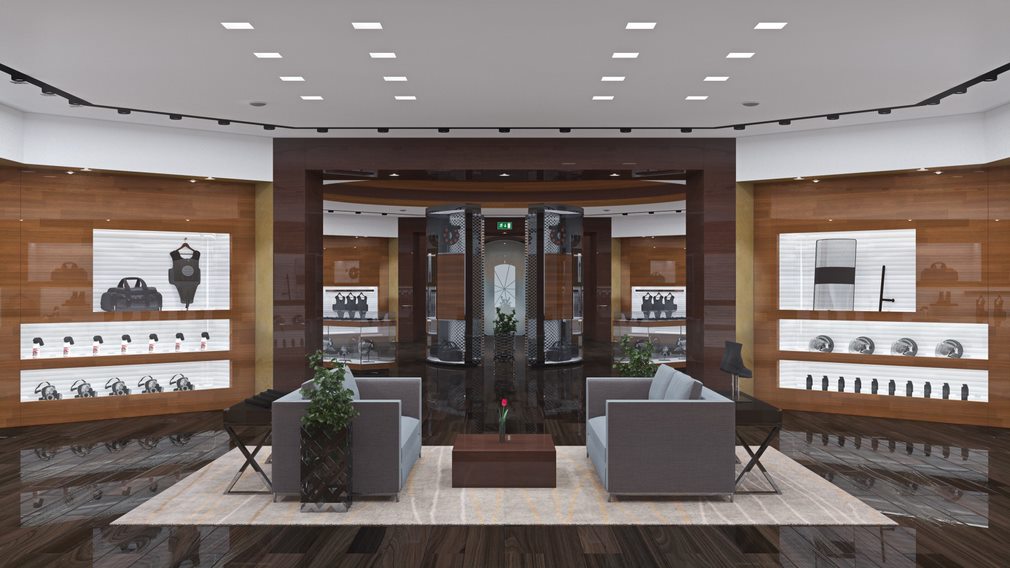
Using CGI means that you do not rely on traditional filmmaking tools. What is your relationship to cinema in the context of your work?
I like to think of my video installations as somewhere between cinema and a video game. They have no beginning or end, no cuts or edits, yet they rely very much on cinematic compositions.
You have also worked recently with sculpture, using digital fabrication tools to produce pieces from marble sourced in Italy. What appeals to you about experimenting with sculpture?
I recently began working in marble using digital fabrication processes, creating organic forms that appear like animals entombed in a skin suggestive of a leather couch, with 3D-printed gold-plated ornamentation affixed to the marble surface that specifically recall the style of a Chesterfield couch. These works are a study in contrasts, both natural and synthetic, virtual and physical, historic and alien.
Moving between physical and digital formats in this way highlights the connections between the two, whereby our digital or online lives inevitably influence our everyday physical reality. How do you perceive the overlap or disconnect between the physical and the digital?
The overlap is certainly blurry and difficult to pinpoint, but creating art in this ambiguous space is somehow empowering. Taking creative ownership of digital technology can help us gain some critical awareness and maybe overcome its many shortcomings.
This feature originally appeared in issue 36
BUY ISSUE 36